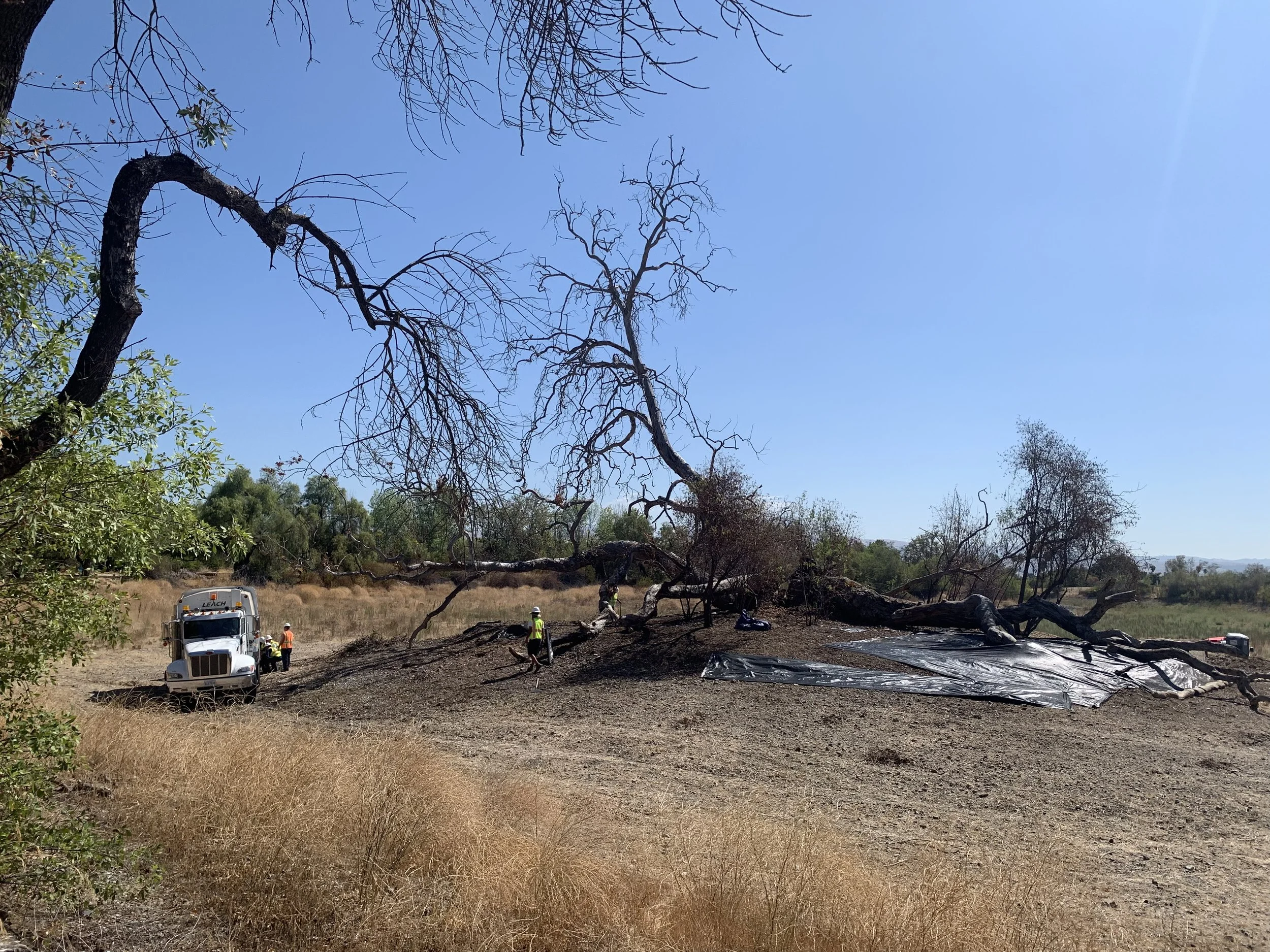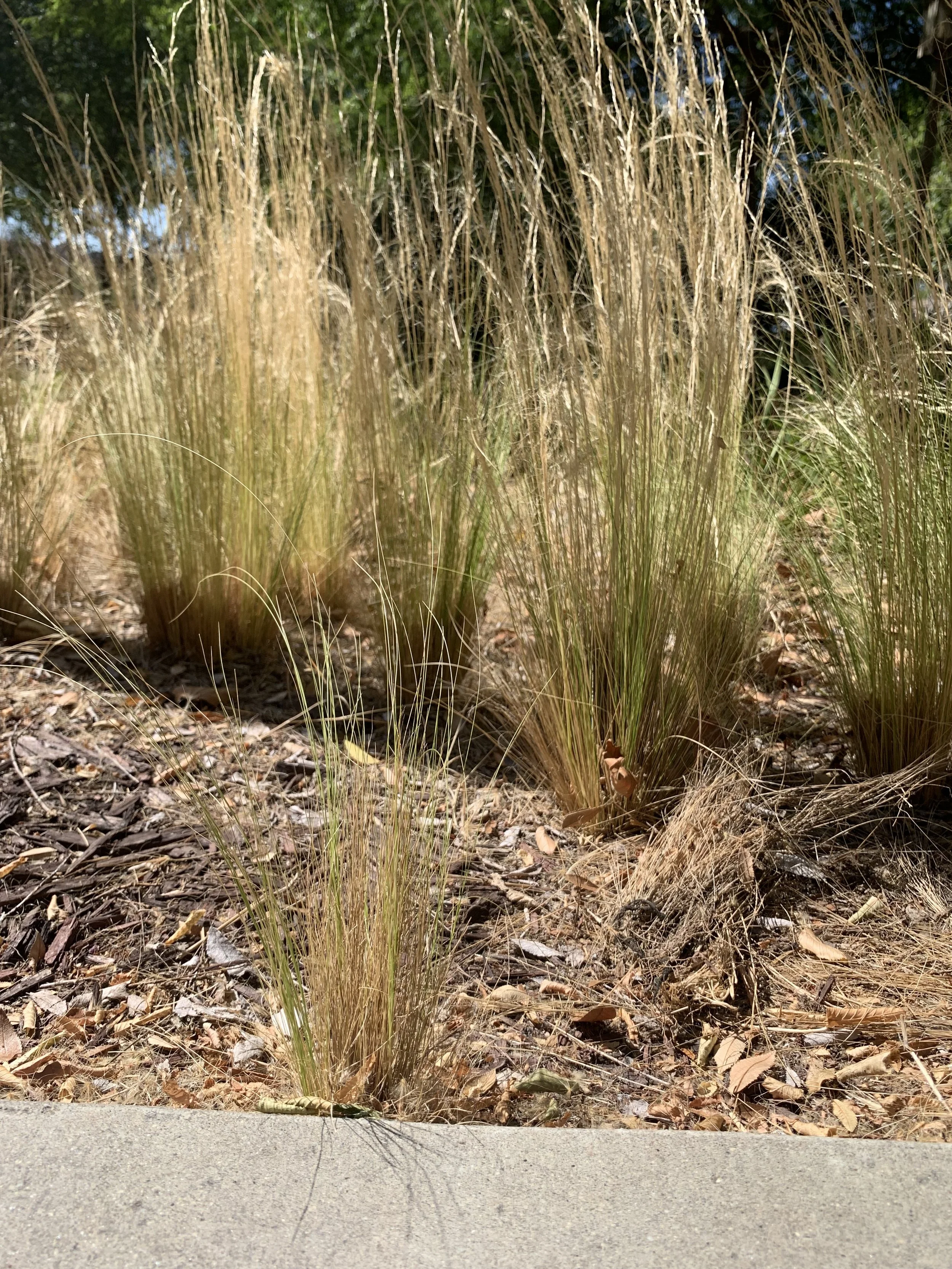With our beautiful, mild Mediterranean climate in California, it’s no wonder we can grow thousands of varieties of plants from all over the world. Some of these plants, however, can do a little too well here and left unchecked, can cause economic or environmental harm, overtaking crops or rangeland, out-competing native plants that wildlife depend on for food and shelter, clogging up our waterways, or even increasing risk of fire or floods. These non-native plants causing problems are considered “invasive.” Managing and removing these plants once they get out of hand can be a labor intensive, expensive process. According to the California Invasive Plant Society (Cal-ICP), at least $82 million goes to managing invasive plants every year in California.
Valley Water maintenance crew demonstrate the labor intensive process of manually removing and solarizing a stand of highly invasive Arunda grass.
It’s easy to assume that a plant on the shelf at our local nursery is safe to put in our gardens, but there are many popular nursery plants available that have invasive tendencies. Organizations such as PlantRight and Cal-IPC make it easy to identify and avoid invasive plants though. PlantRight’s Invasive Plant List highlights the top 7 invasive plants to avoid, such as the popular Mexican feathergrass, and suggests alternatives to plant instead.
Mexican feathergrass (Stipa/Nassella tenuissima) self-sows easily, often spreading far from its intended spot in the garden.
Cal-IPC offers an extended list of plants that threaten California’s natural areas, rating the plants that are considered invasive or labeling others as ‘Watch” species that have the potential to become invasive. Some commonly used landscape plants on the list that are considered highly invasive include English ivy, highway ice plant, and several forms of broom. Others of concern include popular forms of periwinkle, cotoneaster, fountain grass, and the common fig tree.
PlantRight offers some great guidance on how we as home gardeners, landscape professionals or plant sellers can play a roll in reducing the negative affects of invasive plants:
Plant Right: Never plant invasive plants in the outdoor area.
Buy Right: Buy only non-invasive plants.
Sell right: If you sell plants, become a PlantRight partner.
Choose your plants wisely when planning your garden and remember, Don’t Plant a Pest!


